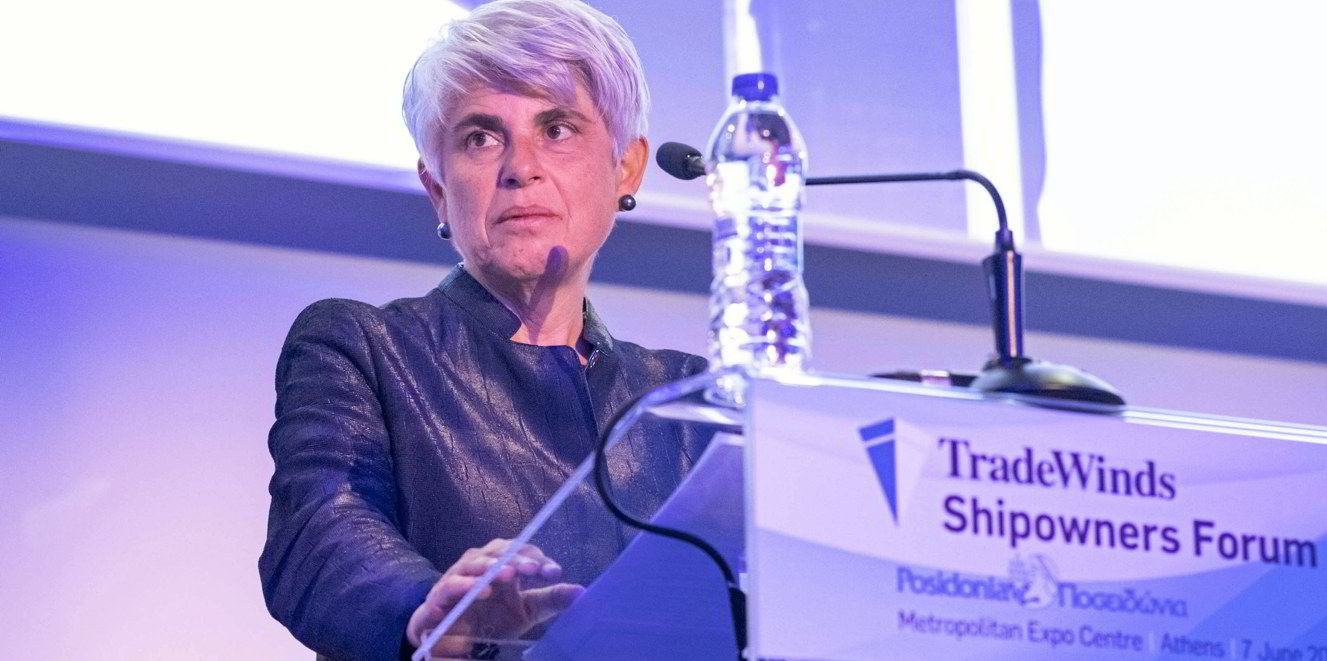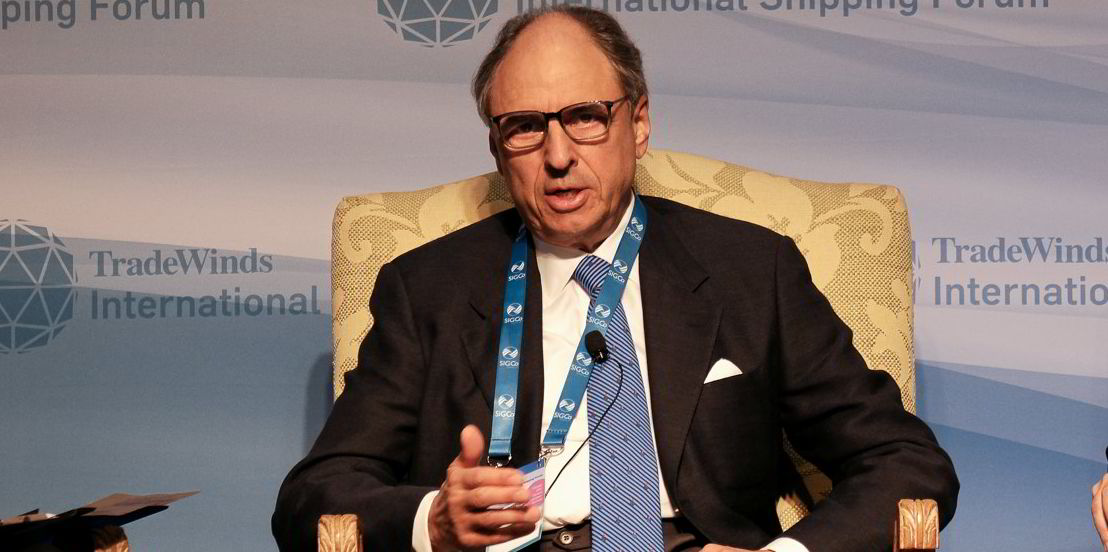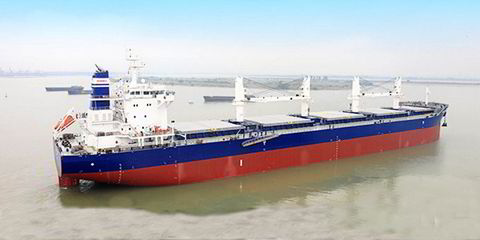Tanker stocks continued to make money for investors in the first three months of 2024, but they surrendered last year’s industry-leading position to listed companies in dry bulk and container ship leasing.
Meanwhile, the once-hot gas sector failed to stay in the black for the past quarter, while liner companies still struggled amid an oversupply of tonnage.
Those were the results of first-quarter performance for the (mostly) New York-listed shipping stocks under the coverage of investment bank Jefferies in a survey done in conjunction with Streetwise.
The average performance of the 28 companies was almost exactly in line with the 10% rise in the S&P 500 index over the quarter, as 21 of the stocks logged gains in share price. With dividends considered, 23 of the companies gave investors a return.
Tankers surrendered the dominant position they’d earned over 2023, when they logged an average 28.3% gain in share price. Still, they managed an average 11.3% improvement.
They came third after dry bulk shares — which surged an average 17.3% in what is traditionally the sector’s weakest quarter — and container ship lessors, which were up 16.8% with the help of legacy contracts and Red Sea disruption.
The boxship lessor numbers may be distorted, however, by the inclusion of Navios Maritime Partners. It plays in a variety of operating sectors that include bulkers and tankers, and had the best share performance of any Jefferies company, a 52% gain.
The Jefferies view
While the raw numbers certainly tell a story, so do the impressions of veteran Jefferies analyst Omar Nokta, who is on the front lines of investor interaction on a daily basis.
One big takeaway from a Streetwise interview this week: don’t sleep on the tanker stocks, as they are still front and centre in investors’ thinking.
“Where people have the most conviction continues to be in tankers,” Nokta told us. “It’s where I spend most of my time talking to people — whether it’s hedge funds, long-onlys, energy funds.
“The audience continues to get wider. The stocks screen well. The profitability is there. The leverage is low. Companies are still reluctant to make investments in new tonnage, and that’s happy news for investors, as they see the free cash flow coming their way in the form of capital returns.”
With that said, Nokta acknowledges that dry bulk stocks “have done tremendously well”, especially considering that the first quarter is usually the bottom.
“It’s really a continuation of what started in September, when capesize rates unexpectedly started to move up. We were surprised to see them hit $30,000 a day, and then they went to $40,000 and $50,000.”
Not surprisingly, Jefferies and other banks began to push the equities more aggressively. Clearly some investors heard them, given the quarter’s gains. But perhaps rates are still ahead of investor interest.
“It doesn’t feel like the dry bulk universe is that well owned,” Nokta said. “There’s just not a lot of investor interest, despite the gains.
“It’s seen as not as investible, not as many large public vehicles outside of Star Bulk and Golden Ocean. But the good news is that’s kind of how tankers looked in early 2022.”
Keeping score
But evaluating the quarter is not just about how the various operating sectors performed. Each is made up of individual owner-operators, and there were winners and losers.
Their numbers rolled out around the same time as the Major League Baseball season began in the US. The two New York teams — the Yankees and the Mets — play their home games just a few miles from the stock exchanges, and are owned by a former shipowning/shipbuilding family and a hedge-fund titan, respectively.
The Yankees are baseball’s biggest victor, with 27 World Series titles, and opened the 2024 season with five straight wins. The Mets are the sport’s lovable losers, and characteristically dropped their first four contests.
So who were the Yankees and who were the Mets in the Jefferies results?
The Yankees cap goes on the head of Angeliki Frangou, who already has an old Commodore’s hat from the Connecticut Maritime Association. Her Navios Maritime logged that 52% gain at the top of the Jefferies pack.
The Mets jersey goes to AP Moller-Maersk, one of the few Jefferies listings that does not trade in New York. The Copenhagen-listed shipping giant fell 25.9% on the quarter after releasing a sobering 2024 outlook that chilled investor interest in the rest of the liner sector as well.
How did Navios get the win? Well, starting from a low base helped, as the stock in recent months has been among the most poorly valued of US-trading equities.
In Nokta’s view, the owner’s diversified approach was supported as markets were relatively strong in all three operating areas — tankers, bulkers and even recently in boxships.
But the real boost was Frangou’s increasing stake in the company. The first stage saw her exposure rise to 15.6% through a buyout of affiliated Navios Holdings.
Then in February and March, the principal began buying up shares in the open market, fattening the cache to 16.7%.

“That was the real muscle behind the move up in the stock,” Nokta said. “Navios is a stock that a lot of people know and feel is cheap. Investors have wanted a share buyback for quite some time. Angeliki’s buying more shares pushed the stock to a new level.”
The bad news: Navios still trades around 30% of Jefferies’ $144 per share net asset value estimate.
As for Maersk, the company probably deserves some sort of award for candour as a booby prize for being Jefferies’ trading laggard.
In reporting its fourth-quarter 2023 earnings, Maersk essentially threw icy water on any excitement over the benefits of route diversions in the Red Sea, focusing instead on a difficult year ahead due to vessel oversupply.
“It sobered people up a bit,” Nokta said. “You had a lot of investors who’d exited the sector in 2023 begin to show renewed interest on the Red Sea benefits, but they fled after Maersk reported. And companies like Zim and Hapag-Lloyd got caught in the crossfire.”
Dry bulk owners dominated the rest of Jefferies’ top five for the quarter. Significant capesize owner Golden Ocean came second with a 32.8% rise, followed by a 26.2% increase for Greece’s SafeBulkers and a 22.5% rise for New York’s Genco Shipping & Trading.
Evangelos Marinakis’ Capital Product Partners rounded out the group with a 22.5% increase as investors liked its move out of container ships into a full LNG focus, backed by new investor Yoda PLC.
In the weakening gas market, Flex LNG and Dorian LPG logged losses of 12.5% and 12.3%, respectively. It was quite a reversal for Dorian, which led all Jefferies stocks with a 131.5% gain in 2023.
Euronav and Nordic American Tankers managed to lose share value of 5.8% and 3.8%, respectively, despite operating in the tanker sector.
Investors have baulked at Euronav’s move into the green-energy market, while NAT has underperformed tanker peers on rates and remains among the few public owners to eschew a quarterly earnings call.








